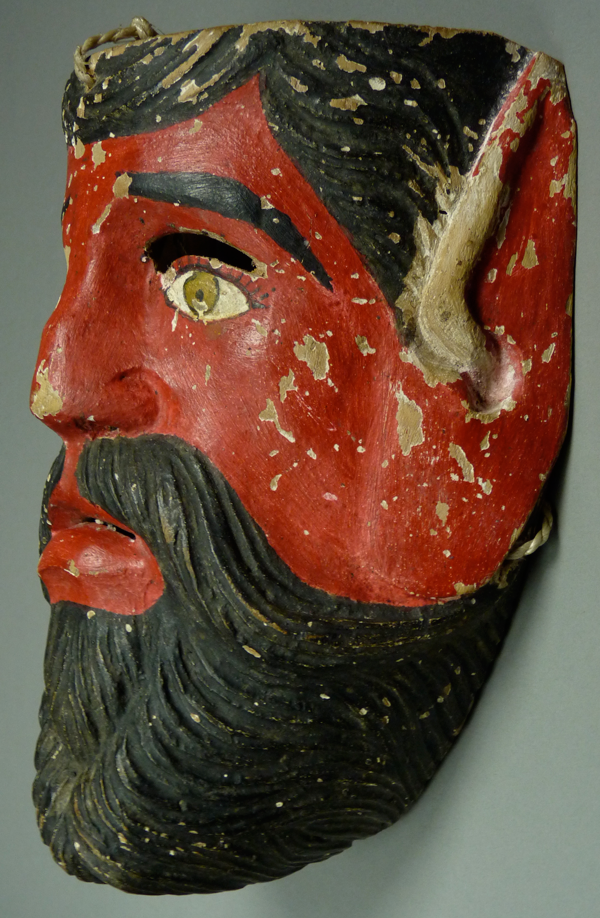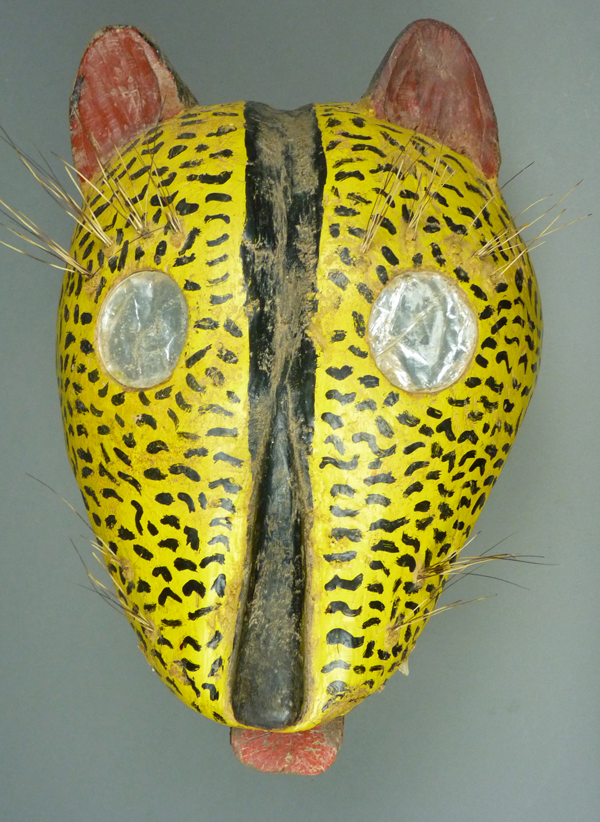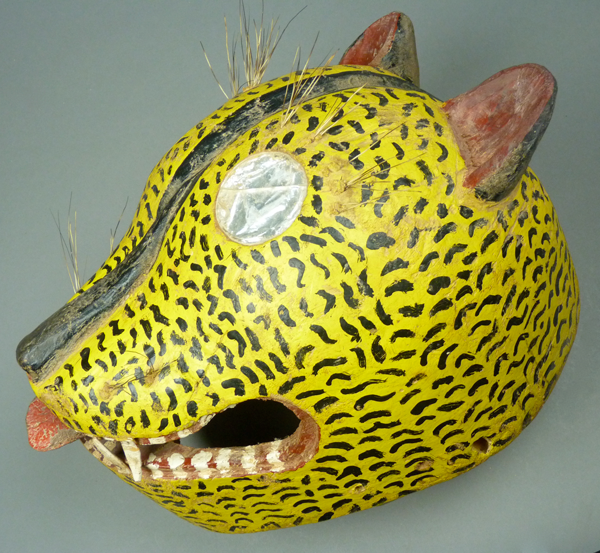In December of 2010 Carlos Moreno Vasquez and I visited the Olintla home of the owner of the masks for the Hormegas dance. The owner was not there at the time, but a relative was kind enough to retrieve the dusty masks from their storage place above the rafters and I was allowed to take photos. However, the relative felt that she lacked the authority to grant permission on behalf of the owner for their publication. Later the owner sold an Hormega mask to Carlos which was similar to two others that I had seen earlier and photographed; evidently it had also been part of the group. In contrast to the others, this one was freshly repainted. After considerable study, Vernon and I concluded that there were four masks in that Hormegas dance set that had definitely been carved by Magno León: a mask of Pilato Malo (Bad Pilate/Pontius Pilate), two of the dusty old Hormega masks, and the newly repainted Hormega mask, which shared many but not all of the features of the other two.
I added the freshly repainted Hormega to my collection and later I commissioned Carlos to make a special trip to Olintla for the sole purpose of buying or trading for the Pilato Malo mask, which he successfully accomplished. This means that I have two of the masks by Magno León from the Olintla Hormegas dance group to show you today. I will compare Magno’s carving style for these Hormega masks to the styles of two other carvers, Benito Juárez Figueroa and Leopoldo (“Polo”) Cortez González. You will have the opportunity to see that the work of these three is quite similar, but yet each one’s style can be distinguished from the others by careful observation of their back designs.
I went to great lengths to obtain this mask because it is so interesting. Despite the title of the dancer who wears this mask—Pilato—this is actually a mask of Satan disguised as Pilato. The clue to this is his ears. From the masks in an earlier post, we know the typical design used by Magno León to carve human ears, but this mask has the ears of a goat, conforming to the European Christian formula to depict the devil. Although this is evident from the front, it is more obvious in the side view. Otherwise, as you will be able to see for yourself, this is a typical example of a high end mask by Magno León, with finely carved hair and beard, arched vision slits with rounded ends, relief carved eyes, his typical nose with a groove underneath, and a carefully sculpted lower lip. Despite the flaking paint, this is a very fine mask.
The goat’s ears are very large, extending down to the margin of the beard.







